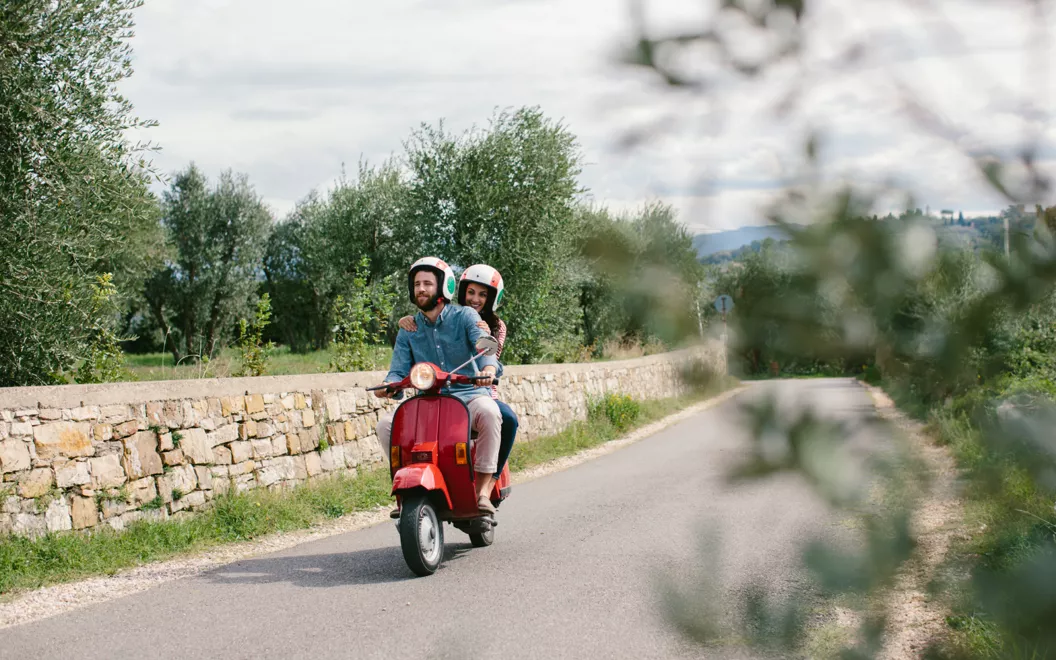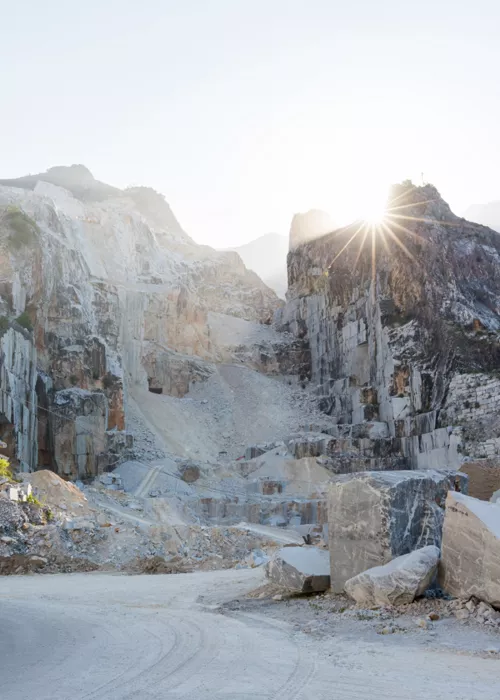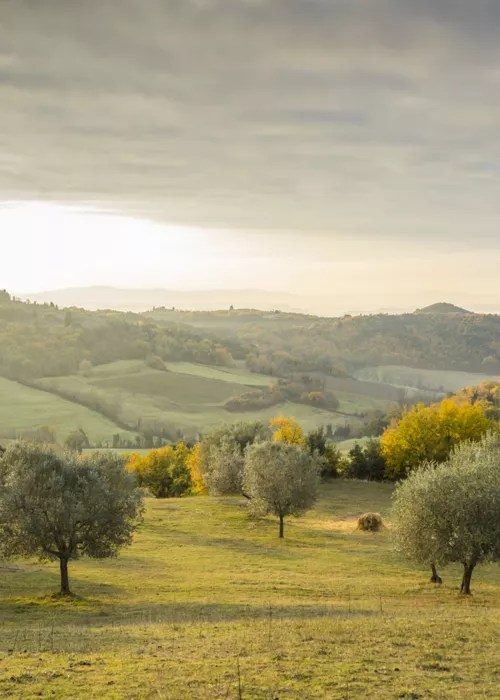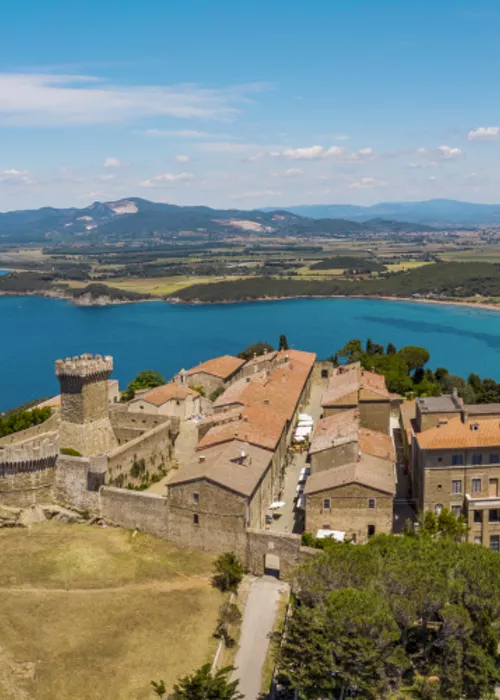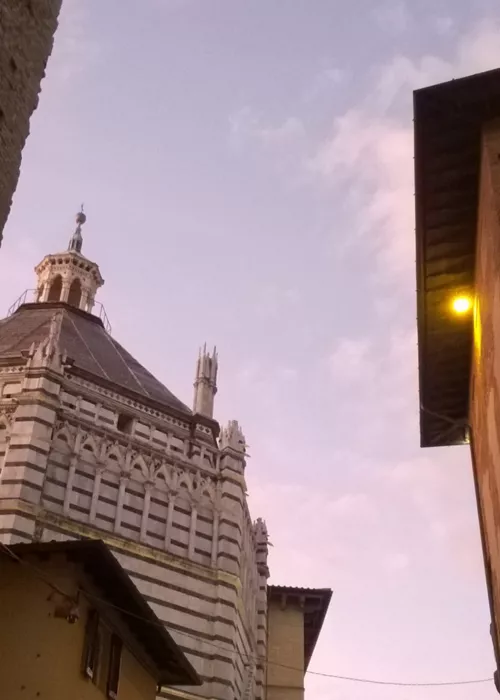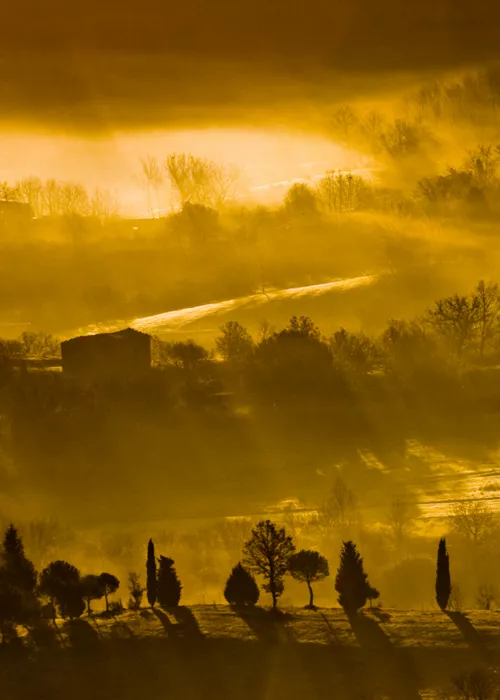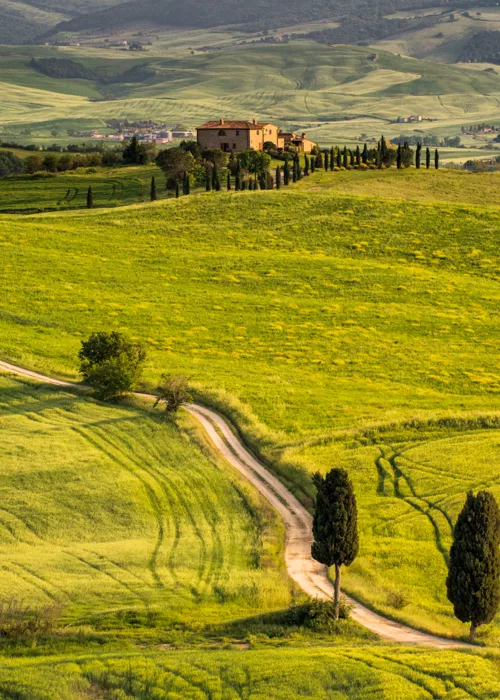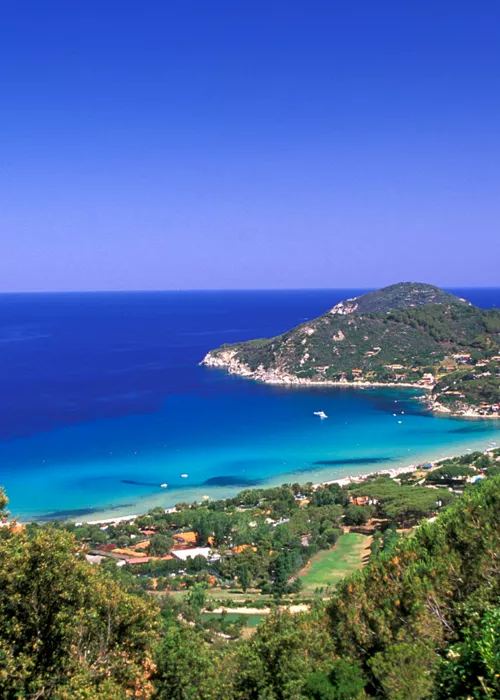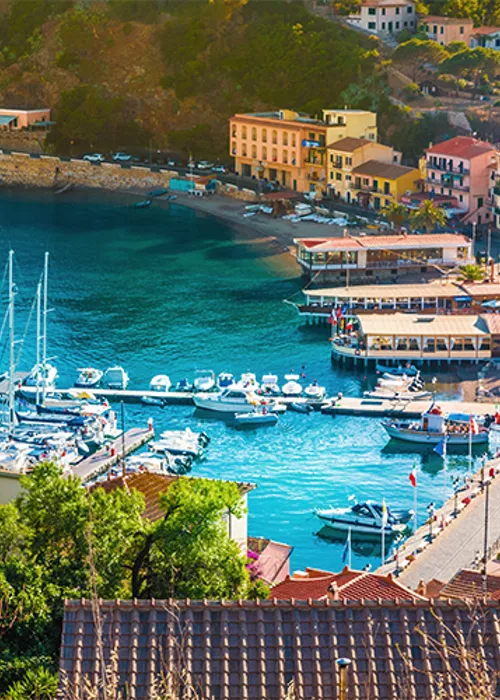Pontedera

A Vespa itinerary in Valdera can only begin in Pontedera, which, besides being the gateway to the valley, is above all the home of the iconic scooter. So we begin with a visit to the Piaggio Museum, which has made Pontedera a true secular pilgrimage destination for die-hard Vespa enthusiasts. The museum is set up in the former tooling workshop of the industrial complex and showcases numerous classic and customised examples of Vespa, scooter, Ciao, sidecar, several models of Ape, the commercial tricycle, and motorbike models of other group brands, Aprilia, Gilera, Moto Guzzi.
Pontedera is not, however, just a city of engines, but also a city of contemporary art, where here and there one can see permanent installations signed by Pietro Cascella, Nado Canuti and Giò Pomodoro, or murals that enliven the streets, such as the lively Muro di Baj. There are also exhibition and community centres, such as the PALP Museum, inside the 14th-century Palazzo Pretorio, and theCentrum Sete Sóis Sete Luas, which host temporary exhibitions.
Casciana Terme Lari

An Orange Flag of the Italian Touring Club, Casciana Terme Lari is the fusion of two towns, Casciana Terme and Lari. The first, it has it written in its name, is known for its thermal springs from which waters with therapeutic properties gush forth at a temperature of 35.7 C. The tradition of wellness in Casciana dates back to 1100, when Countess Matilda of Canossa (that is why the spring water is called Mathelda) discovered the beneficial properties of the waters and gave the first impulse to the thermal development of the place. However, the first documents mentioning a spa in Casciana Terme date back to 1311 and it was Federico I da Montefeltro who wanted it.
Lari, a village of Etruscan origin, has well preserved its original layout, with characteristic narrow alleys and buildings close to each other, has three gates and gathers around its fortress, the medieval Castle of the Vicars rebuilt by the Medici in the early 16th century. Also worth seeing is the church of S. Maria Assunta and S. Leonardo, with a marble Annunciation by Andrea di Francesco Guardi, a 15th-century Pisan sculptor. Lari is the town of cherries, to which an annual festival is dedicated between May and June.
Chianni

In a landscape of chestnut woods emerges Chianni, which dates back to the 12th century and was once disputed between Volterra and Pisa before the domination of Florence in the 15th century. The fulcrum of the village is its trapezoidal square, which in summer becomes the scenic backdrop for the Chianni Opera Festival and is overlooked by the church of S. Donato, which is known to date back to 1277 and was completely restored in 1812. In the basement of the parish church is the church of the Compagnia della SS. Annunziata, with a cycle of frescoes from 1739 by Giovanni Battista Tempesti. A few kilometres from Chianni, the hamlet of Rivalto offers panoramic views from Pisa to Volterra and, hidden in the woods, the sanctuary of the Madonna del Carmine.
Lajatico

Andrea Bocelli's hometown, Lajatico is a pleasant village made up of very few houses clinging to a hill, small streets and squares enlivened by murals and installations, the legacy of the contemporary art review Artinsolite, which takes place there every summer in conjunction with the concert that Bocelli organises at the Theatre of Silence, inaugurated in 2006. It is a natural stage, with special acoustic qualities, set in the countryside, with a small lake bordered in part by granite bricks and ever-changing sculptures, created especially for each edition of the show by world-famous artists including Igor Mitoraj, Arnaldo Pomodoro, SCART, Manolo Valdés, Daniele Basso.
Peccioli

A village with a mediaeval layout, with steep alleys called "chiassi", an ancient parish church and bell tower, three museums - the Palazzo Pretorio Museum with its collections, the Archaeological Museum, and the Museum of Sacred Art - as well as a multi-purpose centre hosting temporary exhibitions. All around, a countryside, that of the Serre, made up of rows of vines, olive groves and cypress trees, where archaeological excavations have testified to the Etruscan origins of the place, while the presence of the old sharecroppers' cottages are proof of the area's rural past. A country that certainly does not forget its roots, but looks to the future. Here, everything is an interweaving of old and new, as can be seen in the contemporary art installations perfectly integrated into the urban fabric of Peccioli and its hamlets, such as, for example, Ghizzano, where the Middle Street has become David Tremlett's pictorial canvas, and Legoli, custodian of Benozzo Gozzoli's precious tabernacle, and home to the Green Triangle , a landfill that some 20 years ago became a revolutionary waste disposal plant and at the same time a container for art and cultural activities. It is an Orange Flag of the Italian Touring Club.


